READY TO GET STARTED?
REQUEST A FREE ESTIMATE
Fill out the form below or call (888) 466-7849 for a free, no-obligation estimate.
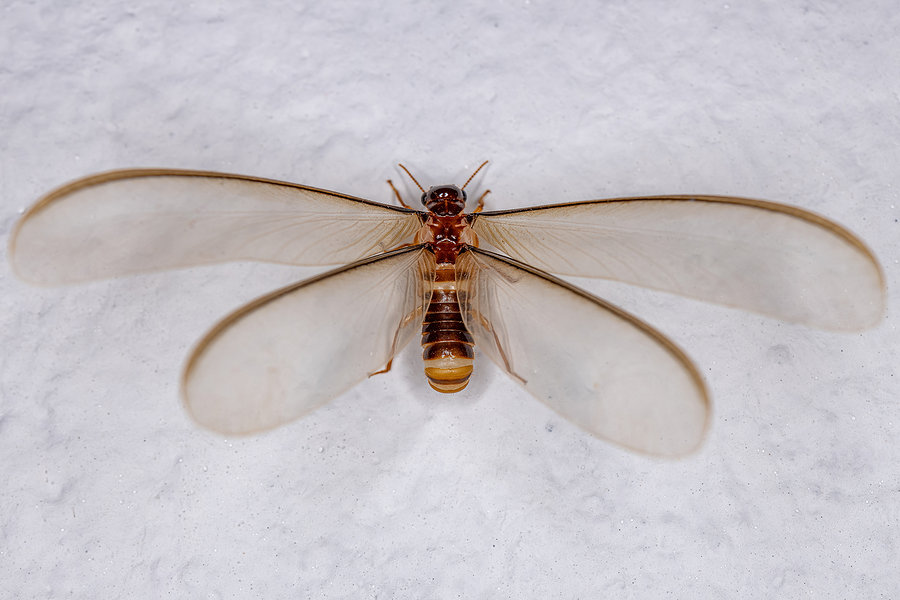
Swarming termites, also known as alates, are termites with wings that leave their colonies with two purposes in mind: reproducing and establishing a new colony. Alates resemble flying ants and will colonize anywhere with a cellulose source and adequate moisture for survival, making your home the ideal environment for a new colony. While alates don’t bite, sting, or eat wood, they are a good indication that there is a termite colony nearby.
Once the original termite colony reaches capacity and is ready to expand, termite swarms occur. These usually happen once per year, although some species will swarm multiple times. Swarms can contain anywhere from hundreds to thousands of alates whose sole purpose is reproduction and expansion of the colony. Once environmental conditions are right, the swarmers will launch themselves into the air and pair off. Once they’ve found their partner, both will shed their wings, mate, and find a new place to nest.
The timing of termite swarms depends on the type of termite you are dealing with. Subterranean termites typically swarm in the spring during daylight hours. Drywood termites swarm in late summer and early fall, and dampwood termites swarm over the summer. Termites will swarm once conditions are ideal, usually the day after a rain shower with overcast weather and winds less than 6 mph. Damp soil after a rainstorm also helps with nest building.
If a colony is already established inside your home, termites may swarm inside. These alates will try to squeeze through cracks and crevices in your foundations and walls to reach open air. Alates are also attracted to light so they can often be found near windows and light fixtures.
Termite swarms vary depending on what species it is. Drywood termite swarms are usually smaller than other termites with less than 100 swarmers. They will swarm in late summer and fall. Due to the small size of the swarm, you may not see the signs of drywood termites until they are already established. Dampwood termites swarm in the summer months. They are of less concern to homeowners as houses don’t typically have the moisture content necessary for them to survive. They can, however, be found in wood structures surrounding homes, e.g. utility poles. Subterranean termites are the most common and have the largest swarms, sometimes numbering into the thousands. These termites swarm in the spring between March and June.
While swarms don’t necessarily mean you have a termite infestation in your home, they are a good indicator that there is a thriving colony nearby. If you spot swarming termites in or near your home, consider a termite inspection to help identify signs of termites you may have missed and ensure you don’t have a hidden colony eating your home from the inside out.
If you suspect termites, contact a professional pest control company who can give your house a thorough inspection and help with a termite control and prevention plan going forward.
How Do I Know if I Have Bed Bugs?
Preparing Your Lawn for Spring
Millipede vs Centipede – Which Is More Dangerous?
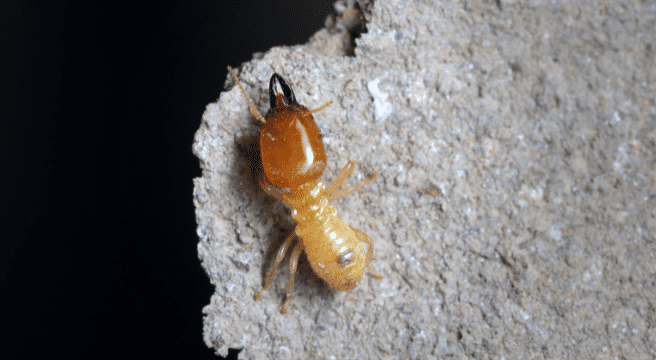
It’s a known fact that termites can cause costly and significant damage to your home, but did you know they are active year-round? Winter does bring some daily changes to termite colonies, including moving deeper into the ground for warmth or seeking shelter in your home’s foundation. Both cases are something to be wary of, especially when it comes to the health of your home.
Subterranean termites might seem like they can’t cause damage in the winter when they burrow deep underground, but don’t let that fool you. When termites burrow underground, they tunnel deep beneath your home’s foundation and can cause structural damage, such as causing your home to shift and become uneven, which is costly to repair.
The plus side to termites in the wintertime is that swarms are nearly impossible. Termite swarms may sound like a scene out of a science fiction movie, but they are necessary for the survival of termites. Fortunately, they are not common in the winter, as they tend to move further away from their colonies in the warmer months, making it more difficult to find them. Consider putting preventative measures in place around your home during the winter season before these pests become active again in the spring months, which mark the beginning of swarming season.
There are several ways to prevent termites, even in the wintertime. There are many great services offered to homeowners that can be beneficial year-round. The most effective option in termite prevention is the Sentricon Always Active® system. It is an environmentally responsible choice for home termite protection and is scientifically designed to eliminate the entire colony – including the queen. It’s crucial to prevent termites, whether they’re active or not.
Termites can be extremely difficult to identify, avoid, and eliminate once they are established. If you spot signs of termites in your home or just want to get ahead in the prevention game, contact a professional pest control company who can set you up with annual termite inspections and even a termite control plan.
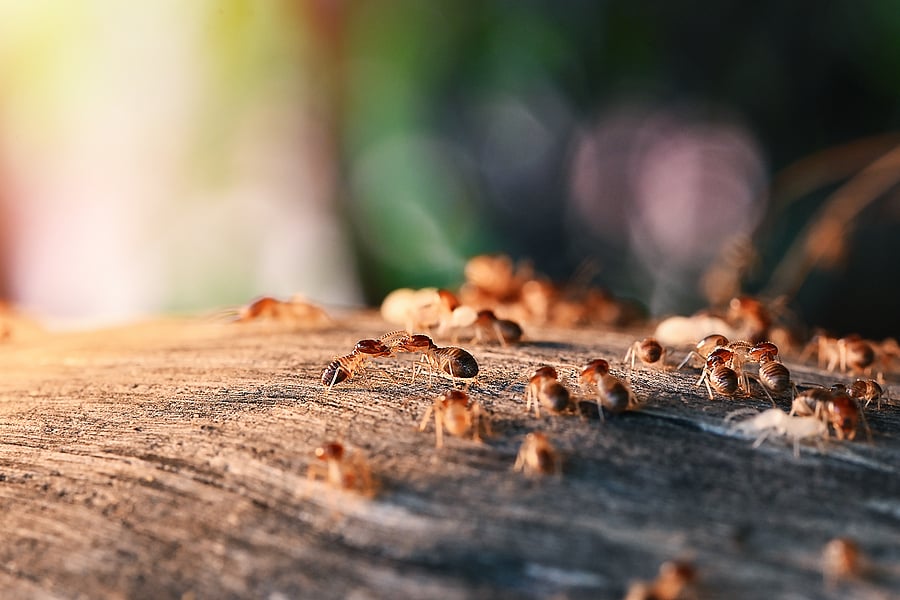
Spring and early summer mark the start of termite swarming season. Swarming termites, also known as alates, are classified as nuisance pests because although they can be bothersome to have around, they cannot bite, sting, or even chew wood. They do, however, signify the presence of an established termite colony nearby which can be problematic for you and your home.
Termites are silent destroyers, often causing significant damage and destruction to your home for long periods of time while going undetected. Learning the signs of termites, including the presence of swarms, is a critical first step in termite prevention.
When dealing with termite swarms, several questions are posed: When is swarming season? Where should I look for swarms? Can these swarms cause damage? Why are they swarming? How can I prevent them?
This question depends on what type of termite you are dealing with. Subterranean termites begin their swarming season in the spring, usually during daylight hours. Drywood termites, on the other hand, don’t swarm until late summer and early fall. Dampwood termites tend to swarm during the summer months. The weather also plays a factor into when termites will swarm. Each species has its own set of conditions that are ideal for swarming but most of them will start the day after a rainstorm when the weather is still overcast and there is little to no wind.
While termite swarms can be found both indoors and outdoors, they cannot survive indoors because of the lack of soil in which to colonize. Swarming termites can be found anywhere termites colonize. If they do make their way indoors, they can often be found near windows and light fixtures as they are attracted to the light.
Termite swarms themselves usually do not cause damage. Swarming termites cannot bite, sting, or chew. As termites get ready to swarm, they make a tube which they use to launch. When conditions are ideal, they use the tube to launch themselves. After a brief flight of only a few seconds, the termites land and break their wings away from their bodies and pair with a mate. Those pairs that survive then create a chamber underground that they use to breed and the new colony is formed. Swarm launches are usually spread out over a few days with a large release on the first day and smaller launches on subsequent days. Termite swarms can indicate the presence of an existing colony nearby so while the swarmers themselves may not cause damage, the nearby colony can.
The primary purpose of termite swarms is reproduction and expansion of the colony. When the original termite colony reaches capacity and needs to expand then the swarming process begins, usually occurring once per year. The number of termites in each swarm varies depending on which type of termite species is swarming and the size of the colony.
In order to prevent termite swarms, one must prevent termite colonies from establishing nearby. Prevent termites by:
Because a termite swarm indicates a nearby colony, homeowners should take precaution when one is spotted nearby. If you suspect you have a termite infestation, contact a professional pest control company who can inspect your property and set up a termite control plan.
7 Snakes You May Encounter This Summer
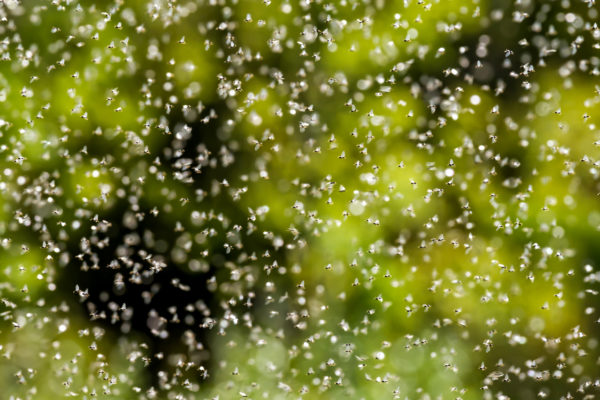
The change of season from winter to spring brings warm weather, sunshine, and … bugs! This is the time of year when many pests emerge from overwintering and begin the mating process. Spring is also known as swarm season – because this is the time when termites and flying ants emerge in droves, sometimes in swarms of thousands! While flying ants can cause problems in and around your home, termites are much more common – and much more costly! How can you tell if those swarming insects are terrible termites or flying ants? Check out our handy reference below for the key differences between the two, as well as what to do if you have these pests swarming in or near your home.
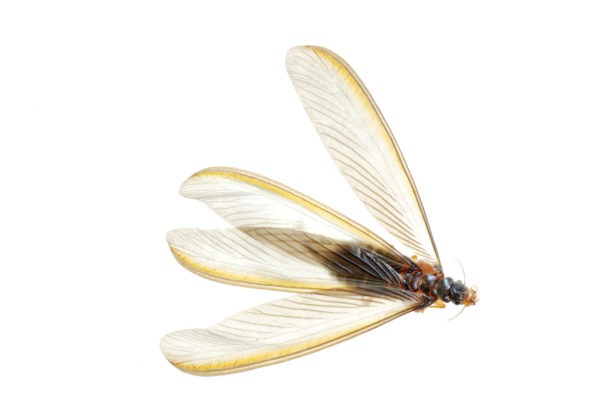
Termites usually swarm once a year for reproduction and expansion of their colonies. Swarms mark the official beginning of termite season. Subterranean termites swarm in spring and during the daytime. Drywood termites swarm in late summer and early fall. Dampwood termites swarm in the summer.
Termites swarm after their colony reaches a certain size and the weather conditions are optimal. The termites are attracted to light and are often found near windows and light fixtures. Swarming termites will try to squeeze through racks and crevices in your walls and foundations to try and reach open air. If you see swarming termites then there is a good chance there is a well-established termite colony in or near your home.
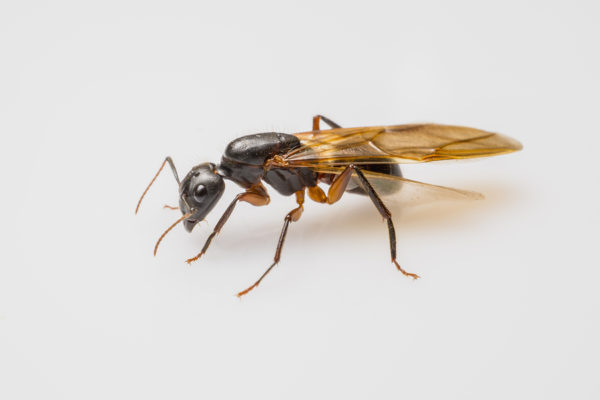
Flying ants will swarm in late spring and early summer. They have to have bright sunlight, low winds, high humidity, and warm temperatures to swarm. They prefer to swarm after there has been 3 to 5 days of rain.
Flying ants swarm for the same reasons as termites – to reproduce and expand their colonies. Flying ants don’t represent any greater threat to humans than their wingless counterparts. Flying ants aren’t as significant a threat to your home as termites but they can still cause damage. If you have flying ant swarms in your home there is a good chance you have an established ant colony in your walls.
So now that you can identify exactly what kind of pest is swarming around your home, what should you do next?